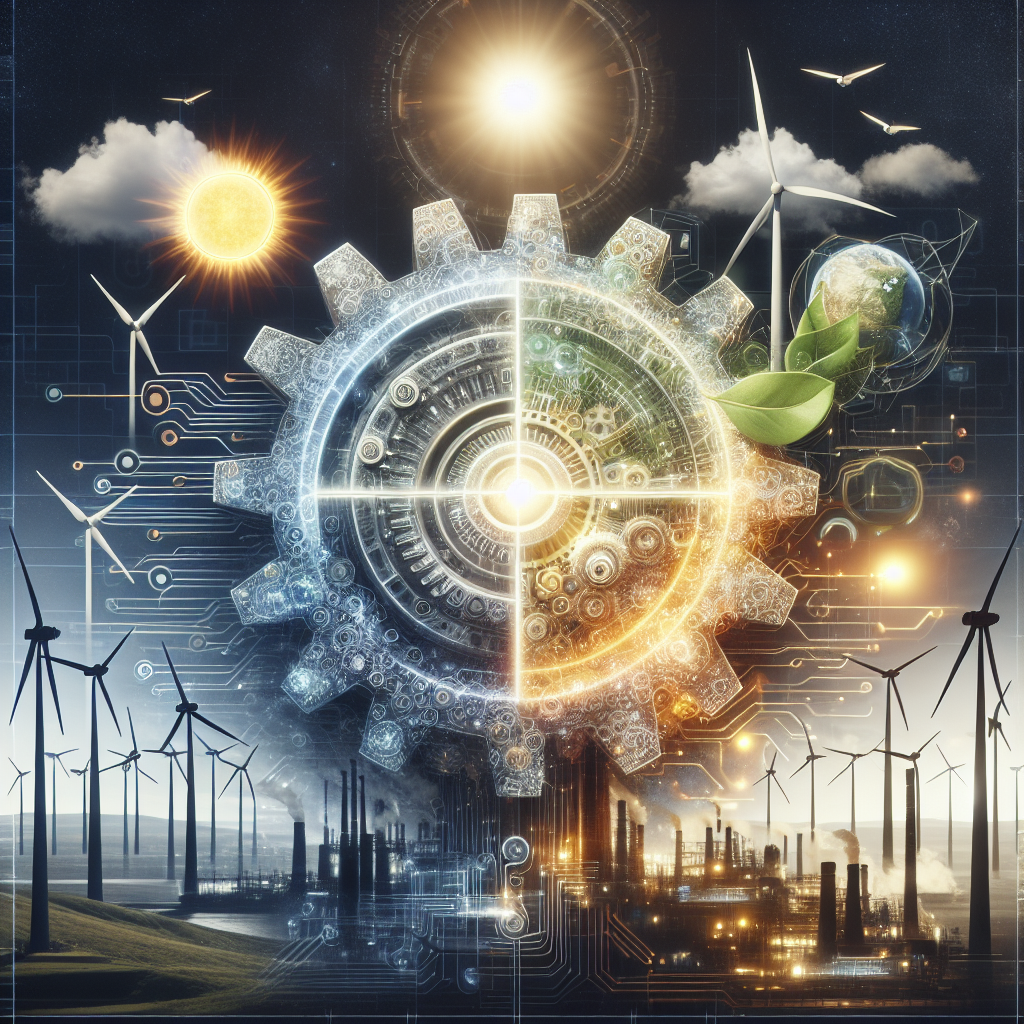As the world continues to grapple with the effects of climate change, the need for renewable energy sources has become increasingly urgent. Renewable energy resources such as solar, wind, and hydroelectric power are crucial in reducing greenhouse gas emissions and mitigating the impact of climate change. However, the effectiveness of these renewable energy sources can be limited by factors such as weather patterns and energy demand fluctuations.
This is where artificial intelligence (AI) comes in. AI technology has the potential to optimize the use of renewable energy resources, making them more efficient and reliable. From predictive maintenance to energy forecasting, AI can help maximize the benefits of renewable energy sources and accelerate the transition to a more sustainable energy system.
One of the key benefits of AI in optimizing renewable energy resources is its ability to enhance energy forecasting. By analyzing vast amounts of data from weather patterns, energy demand, and energy production, AI algorithms can predict the availability of renewable energy sources with greater accuracy. This allows energy grid operators to better plan and manage the integration of renewable energy into the grid, reducing the need for backup power from fossil fuel sources.
AI can also improve the efficiency of renewable energy production by optimizing plant operations and maintenance. By using AI-powered predictive maintenance systems, renewable energy plants can detect potential equipment failures before they occur, reducing downtime and maintenance costs. This not only improves the reliability of renewable energy sources but also extends the lifespan of equipment, making renewable energy production more cost-effective in the long run.
Furthermore, AI can help optimize energy storage systems, such as batteries, to store excess energy from renewable sources for use during periods of high demand. By analyzing historical data and energy consumption patterns, AI algorithms can optimize the charging and discharging of energy storage systems, ensuring that renewable energy is available when needed most. This can help reduce the reliance on fossil fuel-based peaker plants during peak demand periods, further reducing greenhouse gas emissions.
In addition to optimizing energy production and storage, AI can also improve the efficiency of energy distribution. By analyzing real-time data from smart meters and sensors, AI algorithms can optimize the flow of electricity in the grid, reducing energy losses and improving overall grid stability. This can help reduce the need for costly grid upgrades and improve the reliability of renewable energy sources.
Overall, the benefits of AI in optimizing renewable energy resources are numerous. From enhancing energy forecasting to improving plant operations and maintenance, AI technology has the potential to revolutionize the way we produce, store, and distribute renewable energy. By harnessing the power of AI, we can accelerate the transition to a more sustainable energy system and reduce our reliance on fossil fuels.
FAQs:
Q: How is AI used in energy forecasting?
A: AI algorithms analyze vast amounts of data from weather patterns, energy demand, and energy production to predict the availability of renewable energy sources with greater accuracy. This helps energy grid operators better plan and manage the integration of renewable energy into the grid.
Q: How does AI optimize energy storage systems?
A: AI algorithms optimize the charging and discharging of energy storage systems, such as batteries, by analyzing historical data and energy consumption patterns. This ensures that renewable energy is available when needed most, reducing the reliance on fossil fuel-based peaker plants.
Q: How does AI improve plant operations and maintenance?
A: AI-powered predictive maintenance systems detect potential equipment failures before they occur, reducing downtime and maintenance costs. This improves the reliability of renewable energy sources and extends the lifespan of equipment.
Q: How does AI optimize energy distribution?
A: AI algorithms analyze real-time data from smart meters and sensors to optimize the flow of electricity in the grid, reducing energy losses and improving overall grid stability. This helps reduce the need for costly grid upgrades and improves the reliability of renewable energy sources.

